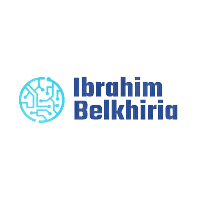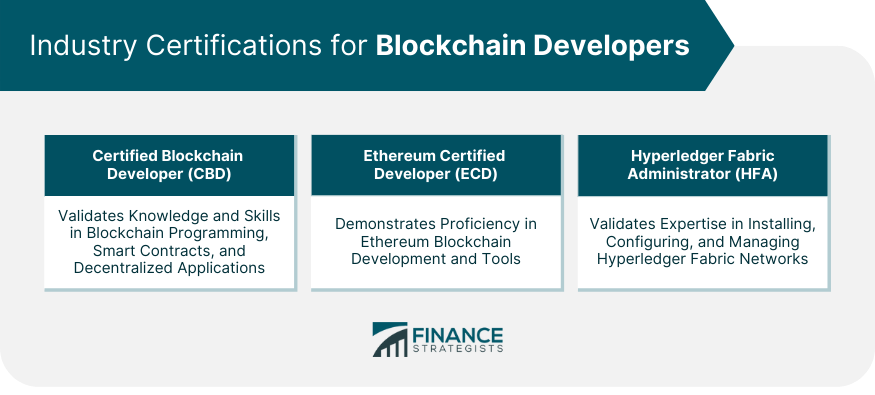Introduction
What is blockchain development?
Blockchain development refers to the process of creating and implementing blockchain technology. It involves designing and building decentralized applications (dApps) that run on a blockchain network. Blockchain development requires a deep understanding of cryptography, distributed systems, and smart contract programming. Developers in this field use various programming languages, such as Solidity, to write smart contracts and build blockchain-based solutions. With the increasing popularity of blockchain technology, blockchain development has become a sought-after skill in the tech industry. By mastering blockchain development, developers can contribute to the advancement of decentralized systems and revolutionize industries such as finance, supply chain, and healthcare.
Why is blockchain development important?
Blockchain development is important because it has the potential to revolutionize various industries by providing secure, transparent, and decentralized solutions. With blockchain technology, businesses can eliminate intermediaries, reduce costs, and increase efficiency in their operations. Additionally, blockchain development allows for the creation of smart contracts, which automate and enforce agreements without the need for intermediaries. This technology also enables the development of decentralized applications (dApps) that can provide innovative solutions in areas such as finance, supply chain management, and healthcare. Therefore, understanding and mastering blockchain development is crucial for individuals and organizations looking to stay ahead in the rapidly evolving digital landscape.
Benefits of blockchain development
Blockchain development offers numerous benefits for businesses and individuals alike. One of the key advantages is the enhanced security that blockchain technology provides. With its decentralized and immutable nature, blockchain ensures that data is stored securely and cannot be altered or tampered with. This makes it highly resistant to hacking and fraud, making it ideal for applications that require a high level of trust and transparency. Additionally, blockchain development enables faster and more efficient transactions by eliminating the need for intermediaries and reducing transaction costs. It also promotes greater accountability and traceability, as every transaction is recorded on the blockchain and can be audited at any time. Overall, embracing blockchain development can revolutionize industries by streamlining processes, enhancing security, and fostering trust among participants.
Understanding Blockchain Technology

What is a blockchain?
A blockchain is a decentralized and distributed digital ledger that is used to record transactions across multiple computers or nodes. It is designed to be secure, transparent, and immutable, making it ideal for applications that require trust and accountability. In a blockchain, each transaction is added to a block, which is then linked to the previous block, creating a chain of blocks. This ensures that every transaction is verified and cannot be altered or deleted without the consensus of the network. Blockchain technology has gained popularity in recent years due to its potential to revolutionize various industries, such as finance, supply chain management, and healthcare.
How does blockchain work?
Blockchain is a decentralized technology that enables secure and transparent transactions. It works by creating a digital ledger of transactions, which is distributed across multiple computers or nodes. Each transaction is verified by these nodes through a consensus mechanism, ensuring that the information is accurate and cannot be tampered with. The ledger is also encrypted and linked to previous transactions, forming a chain of blocks. This ensures the immutability and integrity of the data stored in the blockchain. By eliminating the need for intermediaries and providing a trustless system, blockchain has the potential to revolutionize various industries, including finance, supply chain, and healthcare.
Types of blockchains
There are different types of blockchains that developers can choose from based on their specific needs and requirements. The most common types include public blockchains, private blockchains, and consortium blockchains. Public blockchains are open to anyone and allow for decentralized and transparent transactions. Private blockchains, on the other hand, are restricted to a specific group of participants and offer more control and privacy. Consortium blockchains are a hybrid of public and private blockchains, where a group of organizations come together to maintain and govern the network. Each type of blockchain has its own advantages and use cases, making it important for developers to understand the differences and choose the right type for their projects.
Setting Up the Development Environment

Choosing the right programming language
Choosing the right programming language is crucial when it comes to blockchain development. The programming language you choose will determine the ease of development, the performance of your blockchain applications, and the availability of development tools and resources. There are several programming languages commonly used in blockchain development, including Solidity, JavaScript, Go, and C++. Each language has its own strengths and weaknesses, so it’s important to consider factors such as your project requirements, your team’s familiarity with the language, and the community support available for that language. By carefully evaluating these factors, you can make an informed decision and choose the programming language that best suits your needs.
Installing necessary tools and libraries
To start your journey in blockchain development, you first need to install the necessary tools and libraries. These tools and libraries will provide you with the foundation to develop, test, and deploy blockchain applications. One of the essential tools is a blockchain platform such as Ethereum or Hyperledger. Additionally, you will need a code editor, such as Visual Studio Code or Atom, to write and manage your code. It is also recommended to install a package manager like npm or yarn to easily manage your project dependencies. Lastly, you may want to install a version control system like Git to track changes and collaborate with other developers. By installing these necessary tools and libraries, you will be well-equipped to dive into the world of blockchain development.
Setting up a local blockchain network
Setting up a local blockchain network is an essential step in getting started with blockchain development. By creating a local network, developers can test their smart contracts and applications in a controlled environment before deploying them on a public blockchain. To set up a local blockchain network, developers need to install a blockchain software such as Ganache or Geth, which allows them to run a private blockchain on their local machine. They can then configure the network parameters, such as the number of nodes and the consensus algorithm, to simulate different scenarios. This provides a valuable learning experience and helps developers understand the intricacies of blockchain technology and its various components.
Building Smart Contracts

What are smart contracts?
Smart contracts are self-executing contracts with the terms of the agreement directly written into lines of code. These contracts are stored on a blockchain network, making them transparent, immutable, and secure. By eliminating the need for intermediaries, smart contracts enable trustless transactions and automate various processes. They have revolutionized the way agreements are made and executed, offering a decentralized and efficient alternative to traditional legal contracts.
Writing smart contracts using Solidity
Smart contracts are an integral part of blockchain development, and Solidity is the most widely used programming language for writing them. With Solidity, developers can create self-executing contracts that automatically enforce the terms of an agreement without the need for intermediaries. This makes it a powerful tool for building decentralized applications (dApps) on blockchain platforms like Ethereum. By writing smart contracts using Solidity, developers can ensure transparency, immutability, and security in their applications, revolutionizing various industries such as finance, supply chain, and voting systems.
Testing and deploying smart contracts
In the process of blockchain development, testing and deploying smart contracts is a crucial step. Once the smart contracts have been written, they need to be thoroughly tested to ensure their functionality and security. This involves simulating different scenarios and edge cases to identify any potential vulnerabilities or bugs. Once the testing phase is complete, the smart contracts can be deployed onto the blockchain network. This involves uploading the contract code and executing it on the designated blockchain platform. Deploying smart contracts requires careful consideration of factors such as gas fees, network congestion, and compatibility with the chosen blockchain network. It is important to ensure that the deployed smart contracts are secure and perform as intended, as they will be handling valuable assets and transactions on the blockchain.
Developing Decentralized Applications (DApps)

Understanding DApps
Understanding DApps is essential for anyone looking to get started with blockchain development. DApps, or decentralized applications, are applications that run on a blockchain network rather than a centralized server. They offer various advantages, such as increased security, transparency, and immutability. By understanding how DApps work and their unique features, developers can harness the power of blockchain technology to build innovative and decentralized solutions. Whether it’s creating smart contracts, building decentralized finance applications, or exploring other use cases, a solid understanding of DApps is crucial for successful blockchain development.
Front-end development for DApps
Front-end development for DApps is an essential aspect of blockchain development. It involves creating user interfaces that interact with decentralized applications (DApps) built on blockchain technology. The front-end development process for DApps includes designing and implementing user-friendly interfaces, integrating smart contracts, and connecting with backend systems. Developers need to have a good understanding of blockchain concepts, programming languages such as Solidity, and web development technologies like HTML, CSS, and JavaScript. By mastering front-end development for DApps, developers can create intuitive and seamless user experiences for blockchain applications, enhancing their usability and adoption.
Integrating smart contracts with DApps
Integrating smart contracts with DApps is a crucial aspect of blockchain development. Smart contracts are self-executing contracts with the terms of the agreement directly written into code. They enable decentralized applications (DApps) to interact with the blockchain and automate transactions without the need for intermediaries. By integrating smart contracts with DApps, developers can create secure and transparent applications that are resistant to fraud and censorship. This integration allows for the execution of complex business logic in a decentralized and trustless manner, opening up a world of possibilities for innovative solutions across various industries.
Securing Blockchain Applications

Common security vulnerabilities in blockchain
Blockchain technology offers a decentralized and secure way to store and transfer data. However, like any other technology, it is not immune to security vulnerabilities. In this section, we will discuss some common security vulnerabilities in blockchain and how to mitigate them. One of the main vulnerabilities is the 51% attack, where a single entity or group of entities control more than 50% of the network’s computing power. This can potentially allow them to manipulate transactions and double-spend coins. Another vulnerability is the smart contract bugs, where errors in the code can lead to unintended consequences and result in loss of funds. Additionally, blockchain networks can also be susceptible to phishing attacks, malware, and social engineering. It is crucial for developers and users to be aware of these vulnerabilities and implement proper security measures to protect the integrity and confidentiality of blockchain-based systems.
Best practices for securing blockchain applications
Blockchain applications are inherently decentralized and transparent, making them an attractive target for hackers. To ensure the security of your blockchain applications, it is important to follow best practices. One of the key best practices is to use secure coding techniques and frameworks, such as smart contracts. Additionally, implementing multi-factor authentication and encryption can add an extra layer of security. Regularly auditing and monitoring your blockchain applications can also help identify and address any vulnerabilities. By following these best practices, you can enhance the security of your blockchain applications and protect them from potential threats.
Auditing and testing blockchain applications
Auditing and testing blockchain applications is a crucial step in the development process. It ensures that the applications are secure, reliable, and efficient. Auditing involves reviewing the code and architecture of the blockchain applications to identify any vulnerabilities or weaknesses. Testing, on the other hand, involves running various scenarios and simulations to validate the functionality and performance of the applications. By conducting thorough audits and tests, developers can identify and fix any issues before deploying the applications to production. This not only helps in maintaining the integrity of the blockchain network but also instills trust among users and stakeholders.

